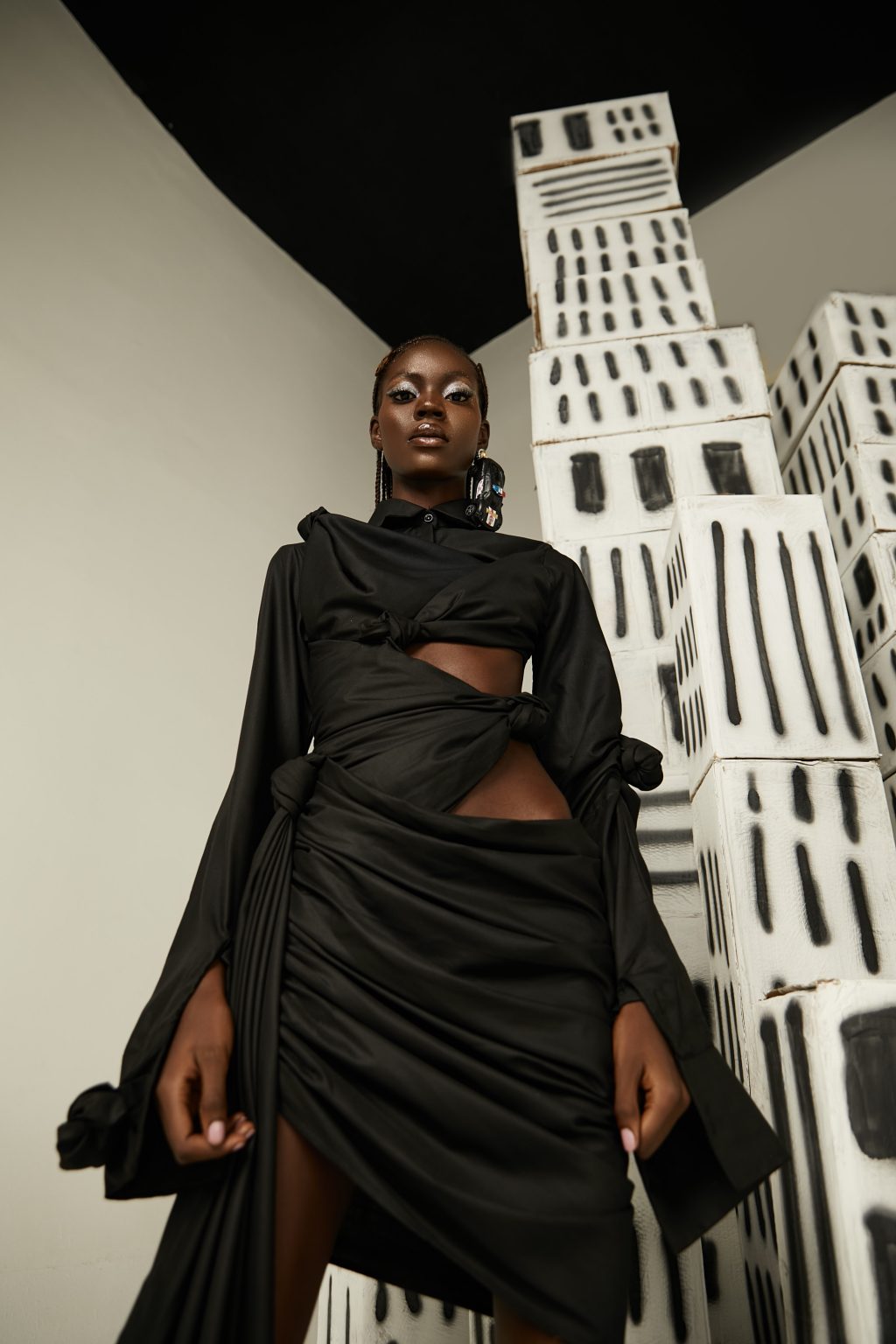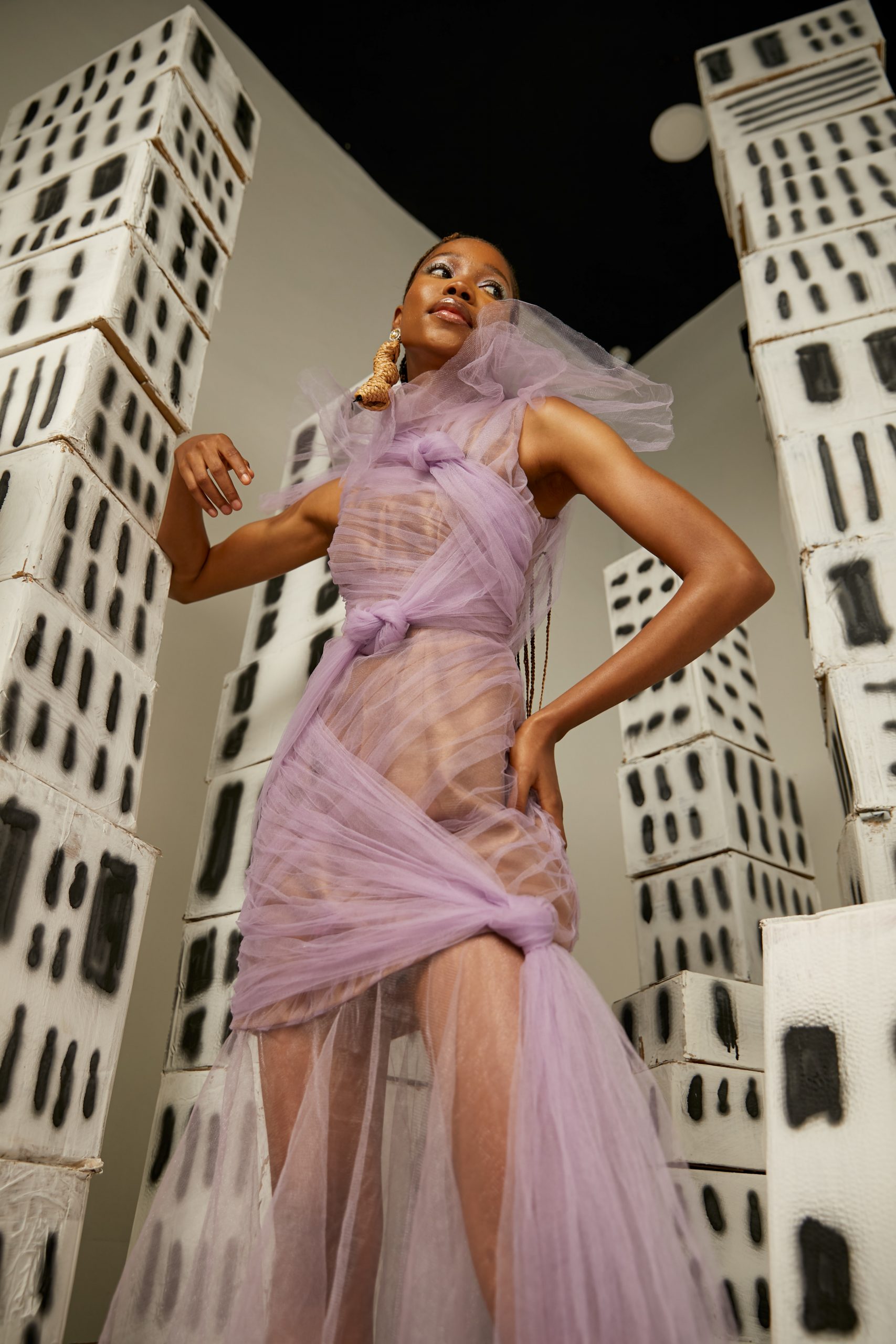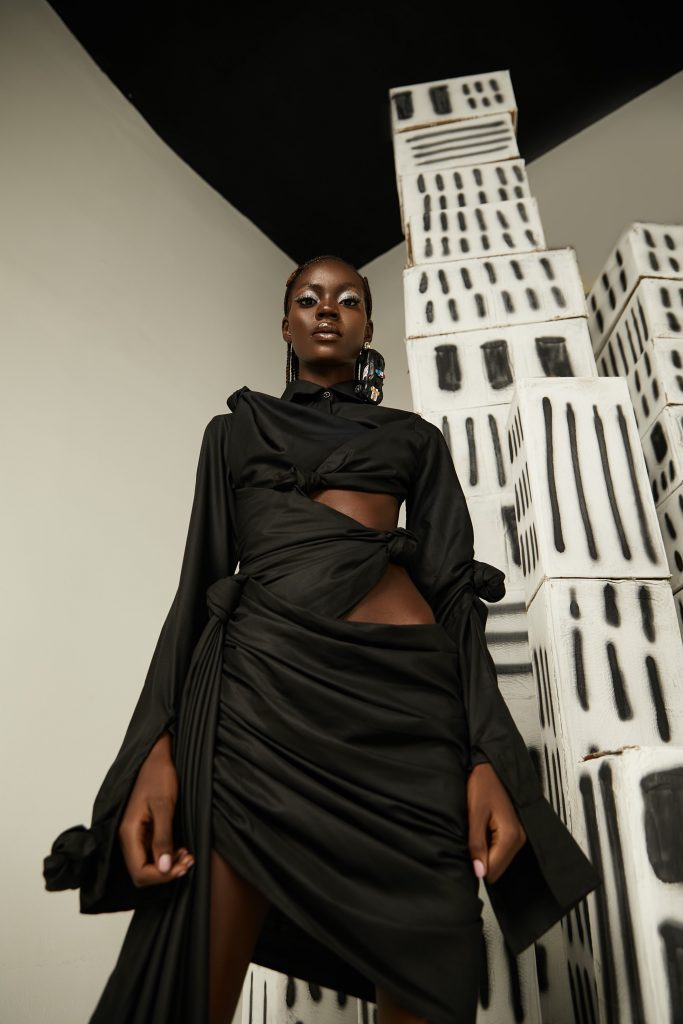For this collection, Aghuno takes us to his Neverland. He discusses growing up as an IBEJI (Twin) in Lagos and being treated like royalty. IBEJI is the name of an Orisha representing a pair of twins in Yoruba land. Nigeria, particularly the southwest, has the world’s highest twinning rate. The Yorubas praise the birth of twins and see it as a great blessing. During the iron age the Yorubas loved twins and worshipped them as gods, knowing that if they did not, the consequences would be dire. The Yoruba Ibeji statues of worship were crafted from wood and have ornament necklaces made from terracotta clay. The statues are stained with important metals to resemble our beautiful African skin. The world’s largest collection of Ibejis are currently at the British Museum, London, not Nigeria.
The firstborn of the twins is known as Taiyewo or Taiwo while the second one is called Kehinde. In Yoruba culture the second twin is considered the elder twin; the reason for this is that Taiwo is sent by Kehinde to judge if the world is fit and beautiful before he/she descends, in accordance with Yoruba belief. Taiyewo is believed to be mostly the quiet, calmer, and introverted of the twins, while Kehinde is mostly believed to be the extroverted one. The Aniocha people of Delta state (The Aghunos state of origin) call the first twin; Onyisi (Frank) and the second is Agiliga (Dricky). The Igbos call twins Ejima and the hausas call them Tagwaye.
Growing up in Lagos, people would be elated whenever they saw us and even come up to greet us simply for the fact that we are twins. We would wear matching clothes, commonly referred to as “And Co”. Sometimes we would switch up the colours so they weren’t completely alike. We never really liked having similar clothes because we were quite different and Fred used to “borrow” my clothes which was quite annoying.
2020 was quite the year and it had most of us feeling down and questioning a lot of things in our lives. “There was a lot of uncertainty and so my mindset was to stay happy. I took this time to reflect and think of all the positives, all the right things that have led me to this point rather than focusing solely on the negatives which were actually important lessons. For this collection, I tried to remember my childhood. I believe that is my happy place. I began to reminisce, i had these Lucid dreams about summer holidays, trips abroad, cartoons and Television shows like papa Ajasco, Ed, Edd and Eddy, Kids next door etc. It was childhood nostalgia.”




